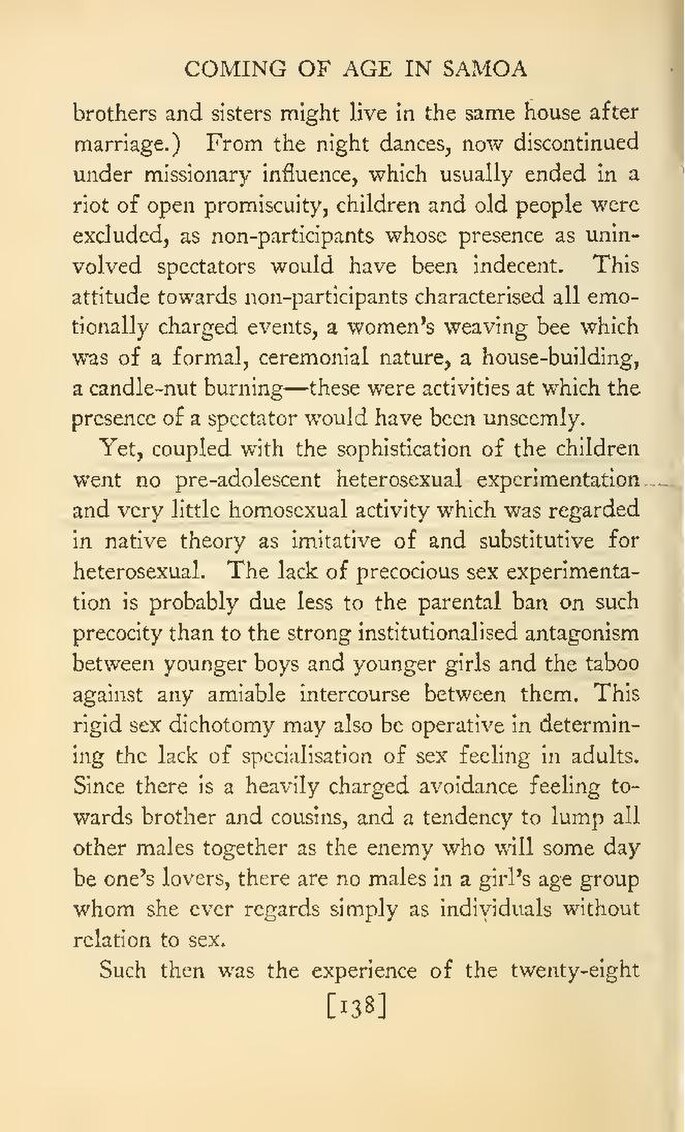Coming of Age in Samoa
brothers and sisters might live in the same house after marriage.) From the night dances, now discontinued under missionary influence, which usually ended in a riot of open promiscuity, children and old people were excluded, as non-participants whose presence as uninvolved spectators would have been indecent. This attitude towards non-participants characterised all emotionally charged events, a women's weaving bee which was of a formal, ceremonial nature, a house-building, a candle-nut burning—these were activities at which the presence of a spectator would have been unseemly.
Yet, coupled with the sophistication of the children went no pre-adolescent heterosexual experimentation and very little homosexual activity which was regarded in native theory as imitative of and substitutive for heterosexual. The lack of precocious sex experimentation is probably due less to the parental ban on such precocity than to the strong institutionalised antagonism between younger boys and younger girls and the taboo against any amiable intercourse between them. This rigid sex dichotomy may also be operative in determining the lack of specialisation of sex feeling in adults. Since there is a heavily charged avoidance feeling towards brother and cousins, and a tendency to lump all other males together as the enemy who will some day be one's lovers, there are no males in a girl's age group whom she ever regards simply as individuals without relation to sex.
Such then was the experience of the twenty-eight
[138]
